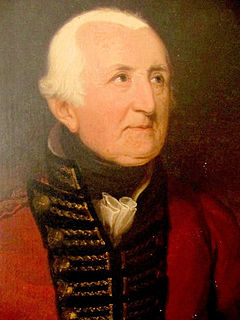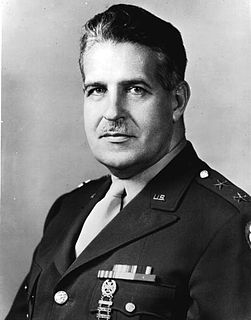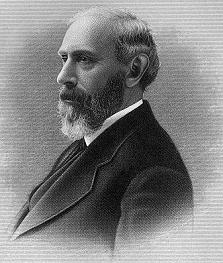 W
WWilliam Anthony was a soldier in the United States Army and a Marine in the United States Marine Corps, who served during the Spanish–American War.
 W
WCarlton William Barrett, a native of Fulton, New York was a United States Army soldier who received the Medal of Honor for heroism near Saint-Laurent-sur-Mer, France on June 6, 1944 during the Normandy landings.
 W
WDonald Prentice Booth was a Lieutenant General in the United States Army. During World War II he was the US Army's youngest theater commander. After World War II he was known for his commands of the 28th Infantry Division, the 9th Infantry Division and the Fourth United States Army. In addition, he served as High Commissioner of the Ryukyu Islands from 1958 to 1961.
 W
WThomas Garry Buckley was an American politician who served as the 73rd Lieutenant Governor of Vermont between 1977–1979.
 W
WJoseph Bradford Carr was a general in the Union Army during the American Civil War.
 W
WJames T. Clancy was a Sergeant in the Union Army during the American Civil War who was awarded the Medal of Honor for his actions during the Battle of Vaughan Road.
 W
WJohn Schuyler Crosby was an American military officer and government official. He was most notable for his service in the Union Army during the American Civil War. After leaving the Army, he served as United States Consul in Florence, Italy and as the fifth Governor of Montana Territory.
 W
WGeneral Sir Cornelius Cuyler, 1st Baronet was a British Army officer who became Lieutenant-Governor of Portsmouth.
 W
WSimeon De Witt was Geographer and Surveyor General of the Continental Army during the American Revolution and Surveyor General of the State of New York for the fifty years from 1784 until his death.
 W
WWalter F. Doran is a retired admiral in the United States Navy, who served as the Commander in Chief, United States Pacific Fleet (CINCPACFLT) from May 2002 to July 2005. He lives with his wife, Ginny and has two sons, one of whom has a daughter named Regan He currently is Raytheon's president of Asia.
 W
WGeneral Michael J. Dugan was briefly the 13th Chief of Staff of the United States Air Force for 79 days in 1990 until he was dismissed by United States Secretary of Defense Dick Cheney after telling reporters that the U.S. military planned to target Saddam Hussein, his family, and even his mistress in the Gulf War with Iraq. He became the first member of the Joint Chiefs of Staff to be dismissed since Admiral Louis Denfeld in 1949, and the first top general to be relieved since General MacArthur in 1951.
 W
WParker F. Dunn was an American soldier serving in the United States Army during World War I who received the Medal of Honor for bravery.
 W
WPeter Gansevoort was a Colonel in the Continental Army during the American Revolutionary War. He is best known for leading the resistance to Barry St. Leger's Siege of Fort Stanwix in 1777. Gansevoort was also the maternal grandfather of Moby-Dick author Herman Melville.
 W
WLieutenant General Leslie Richard Groves Jr. was a United States Army Corps of Engineers officer who oversaw the construction of the Pentagon and directed the Manhattan Project, a top secret research project that developed the atomic bomb during World War II.
 W
WWilliam Henry Johnson, commonly known as Henry Johnson, was a United States Army soldier who performed heroically in the first African American unit of the United States Army to engage in combat in World War I. On watch in the Argonne Forest on May 14, 1918, he fought off a German raid in hand-to-hand combat, killing multiple German soldiers and rescuing a fellow soldier while experiencing 21 wounds, in an action that was brought to the nation's attention by coverage in the New York World and The Saturday Evening Post later that year. On June 2, 2015, he was awarded the Medal of Honor by President Barack Obama in a posthumous ceremony at the White House.
 W
WCharles King was an American soldier and a distinguished writer.
 W
WStephen Bleecker Luce was a U.S. Navy admiral. He was the founder and first president of the Naval War College, between 1884 and 1886.
 W
WJohn William Pauly was a general in the Allied Air Forces Central Europe, and commander in chief, United States Air Forces in Europe, with headquarters at Ramstein Air Base, Germany.
 W
WRobert Hewson Pruyn was an American lawyer, militia general, diplomat, and politician from Albany, New York. He was most notable for his service as Speaker of the New York State Assembly, Adjutant General of New York, and United States Minister Resident to Japan.
 W
WHenry Reed Rathbone was a United States military officer and diplomat who was present at the assassination of President Abraham Lincoln. Rathbone was sitting with his fiancée, Clara Harris, next to the President and his wife, Mary Todd Lincoln, when John Wilkes Booth entered the president's box at Ford's Theatre and fatally shot Lincoln in the head. When Rathbone attempted to prevent Booth from fleeing the scene, Booth stabbed and seriously wounded him.
 W
WPhilip John Schuyler was an American general in the Revolutionary War and a United States Senator from New York. He is usually known as Philip Schuyler, while his son is usually known as Philip J. Schuyler.
 W
WPhilip Henry Sheridan was a Irish-American career United States Army officer and a Union general in the American Civil War. His career was noted for his rapid rise to major general and his close association with General-in-chief Ulysses S. Grant, who transferred Sheridan from command of an infantry division in the Western Theater to lead the Cavalry Corps of the Army of the Potomac in the East. In 1864, he defeated Confederate forces under General Jubal Early in the Shenandoah Valley and his destruction of the economic infrastructure of the Valley, called "The Burning" by residents, was one of the first uses of scorched-earth tactics in the war. In 1865, his cavalry pursued Gen. Robert E. Lee and was instrumental in forcing his surrender at Appomattox.
 W
WCharles Dwight Sigsbee was a rear admiral in the United States Navy. In his earlier career he was a pioneering oceanographer and hydrographer. He is best remembered as the captain of USS Maine, which exploded in Havana harbor, Cuba, in 1898. The explosion set off the events that led up to the start of the Spanish–American War.
 W
WJohn Canfield Spencer was an American lawyer, politician, judge and United States Cabinet secretary in the administration of President John Tyler.
 W
WWilliam Steele was a career United States Army officer who served with distinction during the Mexican–American War. He later served as a Confederate general during the American Civil War.
 W
WFrederick Townsend was a Union officer in the American Civil War. He founded and was Colonel of the 3rd New York Infantry Regiment, and later served with the US Army's 18th and 9th Infantry regiments, where he was brevetted a brigadier general. Townsend served three terms as Adjutant General of New York from 1857–1861, and again in 1880.
 W
WCaptain Robert Townsend was a Civil War-era ship Captain in the United States Navy. He served twice, once before the war then again during the war. He saw active combat while serving aboard three ships, most notably as commander of the USS Essex from 1863–1864, an ironclad gunship on the Mississippi River. Captain Townsend died of heatstroke while commanding the USS Wachusett in China in 1866, and is buried in Albany, New York.
 W
WVerplanck S. Van Antwerp was a Brevet Brigadier General in the Union Army during the American Civil War and served as U.S. Land Office Receiver and Secretary to the Commissioner of Indian Affairs.
 W
WHenry Bell Van Rensselaer was an officer in the Union Army during the American Civil War, and a politician who served in the United States Congress as a Representative from the state of New York.
 W
WThomas Williams, originally from Albany, New York, settled in Detroit, Michigan in 1765. He married Cecile Chapeau from a prominent French-Canadian family that had settled in Michigan in 1710. Williams was a merchant, landowner, and was active in civic and political affairs. Goods were transported to Detroit from Albany via canoe, which could take a number of months for a round-trip. He petitioned for equitable opportunities to engage in trade at Fort Niagara and Detroit. In his role as justice of the peace, he was charged to uphold the law and punish those who were deemed to have broken the law. As notary, he executed legal documents for the settlement. He was also town crier and took the 1782 census. He married Cecile Campeau from a prominent family of French heritage who had come to Michigan about 1710. Cecile's brother, Joseph, was the state's first millionaire. Their son, John R. Williams, was the first mayor of Detroit.
 W
WThomas R. Williams was an antebellum United States Army officer and a brigadier general in the Union Army during the Civil War. He was killed as he commanded the Union troops at the Battle of Baton Rouge.
 W
WWilliam Jenkins Worth was a United States officer during the War of 1812, Second Seminole War, and Mexican–American War.
 W
WGeorge Wilhelmus Mancius Yates was an officer in the U.S. 7th Cavalry Regiment. He was killed in the Battle of the Little Bighorn.